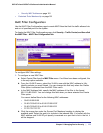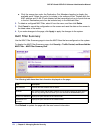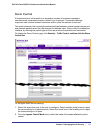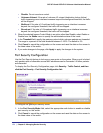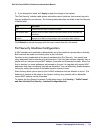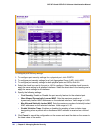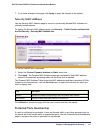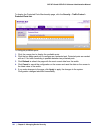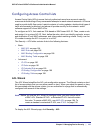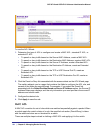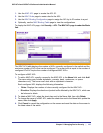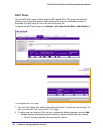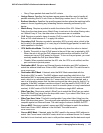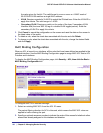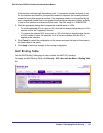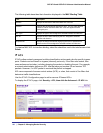
Chapter 5: Managing Device Security | 183
GS716Tv2 and GS724Tv3 Software Administration Manual
Configuring Access Control Lists
Access Control Lists (ACLs) ensure that only authorized users have access to specific
resources while blocking off any unwarranted attempts to reach network resources. ACLs are
used to provide traffic flow control, restrict contents of routing updates, decide which types of
traffic are forwarded or blocked, and above all provide security for the network. switch
software supports IPv4 and MAC ACLs.
To configure an ACL, first create an IPv4-based or MAC-based ACL ID. Then, create a rule
and assign it to a unique ACL ID. Next, define the rules, which can identify protocols, source,
and destination IP and MAC addresses, and other packet-matching criteria. Finally, use the
ID number to assign the ACL to a port or to a LAG.
The Security ACL folder contains links to the following features:
• Basic:
• MAC ACL on page 184
• MAC Rules on page 186
• MAC Binding Configuration on page 188
• MAC Binding Table on page 189
• Advanced:
• IP ACL on page 190
• IP Rules on page 191
• IP Extended Rule on page 193
• IP Binding Configuration on page 196
• IP Binding Table on page 198
ACL Wizard
The ACL Wizard simplifies the ACL rule configuration process. The Wizard contains a short
list of access criteria that you can either permit or deny. When you select the permit or deny
link associated with the access criteria, you are redirected to a page that is automatically
configured with several of the settings.
Note: Before you use the ACL Wizard to configure rules, you must create either
a MAC ACL, Standard IP ACL, or Extended IP ACL that will contain
the rules. To create a MAC ACL, see MAC ACL on page 184. To
create a standard or extended IP ACL, see IP ACL on page 190.
To display the ACL Wizard page, click Security ACL.



